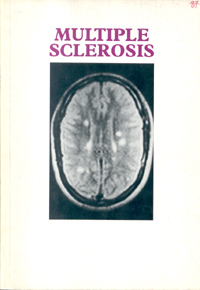Multiple Sclerosis (MS) is a chronic disabling disease which attacks the central nervous system. It claims nearly a thousand lives a year in England and Wales…
Multiple Sclerosis (MS) is a chronic disabling disease which attacks the central nervous system. It claims nearly a thousand lives a year in England and Wales and is responsible for an estimated 92,000 bed-days in NHS hospitals in England. In the primary care…
Multiple Sclerosis (MS) is a chronic disabling disease which attacks the central nervous system. It claims nearly a thousand lives a year in England and Wales and is responsible for an estimated 92,000 bed-days in NHS hospitals in England. In the primary care sector, general practitioners experience some 228,000 consultations annually for MS. The precise prevalence of the disease is difficult to determine but estimates range from 50,000 to 100,000 people suffering from MS in the UK. It is a disease of unknown cause, the prognosis of which is uncertain and for which there is no effective cure. In short, it is a medical mystery.
This paper reviews a number of aspects of multiple sclerosis – the definition, diagnosis, epidemiology, cost and management of the disease. The aim is to build up a comprehensive picture of MS and its consequences and identify areas where clues to causation and treatment have arisen. Certain themes, such as the geographical distribution of MS, were covered more comprehensively in the earlier OHE publication
(OHE. 1975); the focus here is on other aspects of the disease and on advances and issues that have occurred in MS since the earlier paper.
The main part of this paper documents the distribution of mortality and morbidity attributable to MS and examines the health service consequences of the disease in terms of resource utilisation in hospitals and General Practitioner consultations. Thus a ‘burden of illness’ calculus is developed for MS based on the NHS consequences of the disease.
In section 2, the history and definition of MS is examined as a preliminary to review of the problems in diagnosing the disease and also the great uncertainty that still surrounds the prognosis for the MS sufferer. One of the diagnostic advances examined is the use of new health technologies such as Magnetic Resonance Imaging (MRI) which helps to determine those at risk of developing MS.
In sections 3 to 5 epidemiological data are analysed and the evidence on mortality and morbidity is discussed in the context of the existing literature on MS epidemiology.
In section 6, discussion focuses on the management of MS and on advances and prospects for effective treatment. In the assessment of treatment effectiveness, a contrast is drawn between the rigorous scientific evidence demanded by the medical profession from controlled clinical trials and the willingness of patients to accept very limited evidence and to try new treatments which offer some hope of cure or remission.
In section 7, health service utilisation measures for the MS disease group are costed to provide an estimate of the cost of the disease to the health service. In addition to health service costs, the high personal and family costs of the disease are examined. Very little routine published data are available on this latter topic but the clear indication is that for disabling diseases such as MS the burden of illness – financial and otherwise – is likely to fall more on the individual and his or her family than on the NHS or other state agencies.
In conclusion, section 8 draws together some of the themes arising and speculates on where the future may lead.
